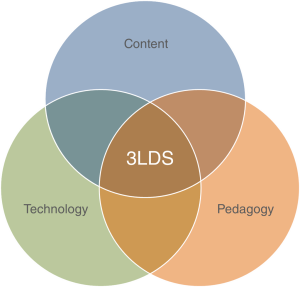5 Common Pitfalls to Avoid Before Developing an E-Learning Courseware

As trainers and subject matter experts (SMEs), we tend to be zealous about our areas of expertise and are often enthusiastic about imparting our knowledge and skills to learners. While this is definitely a positive trait to have when it comes to teaching and training others, it would also be of benefit for us to take a step back and reconsider some of our teaching approaches, especially so when it comes to developing an e-learning training courseware.
As e-learning coursewares often take a significant amount of time to develop and are generally tedious to amend or redesign once completed, it is usually best to get things right from the get-go. This reduces development cost and time spent, and ultimately produces a more effective courseware that successfully imparts the intended knowledge and skills to learners. Here are 5 common pitfalls to avoid while developing an e-learning courseware:
1. Not Defining Learning Objectives
One common pitfall of unsuccessful e-learning coursewares is the failure to define and make known to learners clearly-stated learning objectives. In these cases, although the training content may be adequate, learners fail to meet or understand the intended learning objectives as they do not know what they were in the first place. This scenario can be likened to a ship sailing the vast ocean without a compass or destination, with learners feeling lost and unguided as they go through the courseware.
In other cases, the learning objectives that are stated are either too vague or broad, similarly leaving learners with an ineffective learning experience. Broad and general training objectives can be useful for a macro-level overview of the entire courseware, but we always recommend and aid our clients in breaking broad-level training objectives down into specific and clearly-defined enabling objectives for individual modules. At Three Learning, our Learning Strategists do a superb job at identifying and organising specific learning outcomes for our clients. Using the example of a workplace safety training programme, a broad-level training objective can be successfully broken down into a few specific learning objectives that guide learners in more effectively attaining the intended knowledge and skills:
Understand the concept of risk management.
This high-level objective can be broken down into more specific learning objectives such as:
- Be aware of the various hazards you can encounter at the workplace.
- Understand why safety and health is important at the workplace through various real-life examples.
- Understand and be able to carry out the appropriate procedures during different risk and emergency scenarios.
As Thomas Carlyle once said, “A person with a clear purpose will make progress on even the roughest road. A person with no purpose will make no progress on even the smoothest road.”
Successful e-learning coursewares are the ones that clearly map out specific learning objectives from the outset, so that learners have a clear direction in where they are going and what they are learning from the courseware.
2. Failing to Consider Learner Profiles
Another area in which some e-learning coursewares fall short is that they fail to consider their target learners’ profiles, and in doing so fail to tailor the training content in a way that is best suited to that particular demographic. The coursewares then become disengaging, and learners may feel that some information is irrelevant to their job scopes or roles.
On the other hand, effective e-learning courses always consider and analyse the target learners’ demographics prior to developing the courseware. By doing so, the training content can then be specifically customised to fit the learners’ profiles and better engage the audience.
For instance, an e-learning courseware that is meant for students aged 10-12 would ideally contain more vibrant graphics, animations, attention-grabbing audio recordings and elements of gamification to better engage the students. In contrast, a courseware on Personal Data Protection geared towards adults would be designed differently. It would most likely contain more text than graphics, and also incorporate scenario-based tasks that learners would have to complete.
In considering learner profiles before commencing on e-learning courseware development, we are able to better engage our learners and increase the odds of producing a successful and effective e-learning courseware.
3. Inadequate Content
Third on the list when it comes to e-learning development is the pitfall of inadequate content, or put simply, content that fails to help the learner achieve the intended learning objectives. Inadequate content can come in the form of content insufficiencies, content inaccuracies and content irrelevances.
For an elearning course to be effective, the content has to fulfil three criteria: Sufficient, Accurate, Relevant (S.A.R.). At Three Learning, the S.A.R. framework is used to ensure the adequacy and effectiveness of content. On top of that, our Learning Strategists further develop training content with our 3LDS content development methodology, which incorporates elements from different models such as the ADDIE (Analyse, Design, Develop, Implement, Evaluate) model, Merrill’s Principles of Instruction and Bloom’s Taxonomy. This is done to ensure the best delivery of content to our learners.
Before embarking on e-learning courseware development, be sure to go through a thorough analysis of the given content, and to make the relevant supplementations to any inadequacies. This will definitely aid your learners in achieving the learning objectives more effectively.
4. Not Incorporating Appropriate Assessment Methods
Another common pitfall of e-learning courseware developers is that they fail to incorporate appropriate assessment methods into their courses. Without assessments, it is impossible to evaluate the extent to which learners have successfully understood the training content or met the learning objectives.
Assessments such as quizzes, games, and assignments enable trainers to gain insights on learners’ progress and performance. This, in turn, allows them to discover which sections of the course learners have a better or weaker understanding in, and then supplement these areas with either more online training or conventional classroom training. Assessments can also be done through constructivist learning methods which incorporate relevant forward-looking scenarios and tasks that learners would face in a real-life situation.
Our upcoming learning management system (LMS) Koollab will enable administrators to not only assess their learners through online quizzes, assignments and task-based learning but also provide data on the level of completion of the courses. For instance, if a learner has completed 7 out of 10 segments of a courseware, the statistics will show that he/she has completed 70% of the course. Administrators can also see the number of learners who have completed the course and the duration in which they took to complete it.
By incorporating appropriate assessments that test learners on their acquired knowledge and skills, this not only provides insights to administrators on how well the learners are doing, but also reinforce the important learning points to the learners.
5. Failing to Include a Feedback Form or Survey
One last oversight that e-learning courseware developers tend to commit is the failure to include feedback forms or surveys for their learners. Without a feedback form or survey, learners are not able to provide feedback on how the courseware was designed, and developers are consequently not able to gather insights on how to improve the designs for future courses.
Learner feedback is an extremely essential component to developing better courses and including an evaluation form or short survey at the end of the course is integral to an effective e-learning courseware. As such, we highly recommend the incorporation of feedback forms during e-learning development.
E-Learning, when developed appropriately – content-optimised and customised to suit specific target learners – can present great advantages to the way we teach and learn. Here at Three Learning, we take pride in our work and commit to delivering the best e-learning solutions to meet our clients’ needs. Drop us an email to find out more about how you can optimise your training and gain a higher return on e-learning investment.



